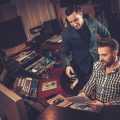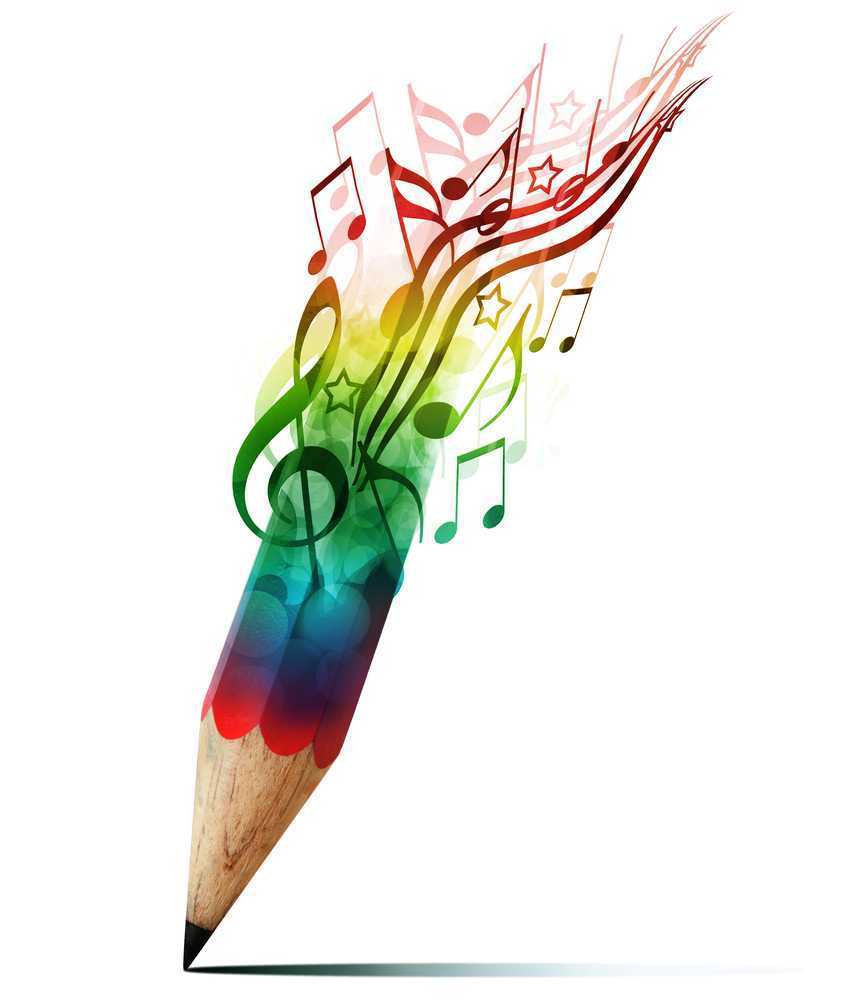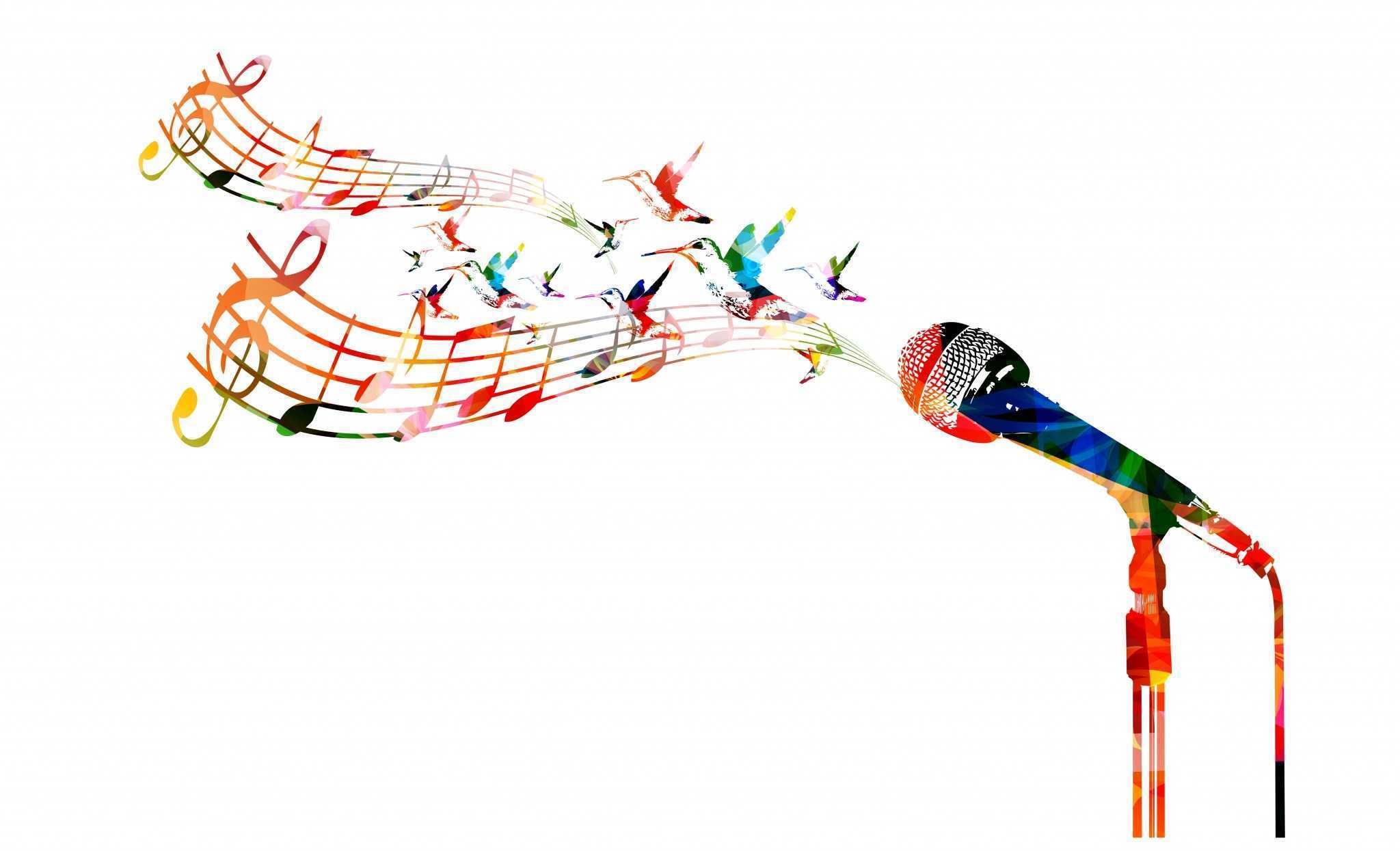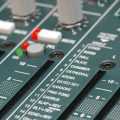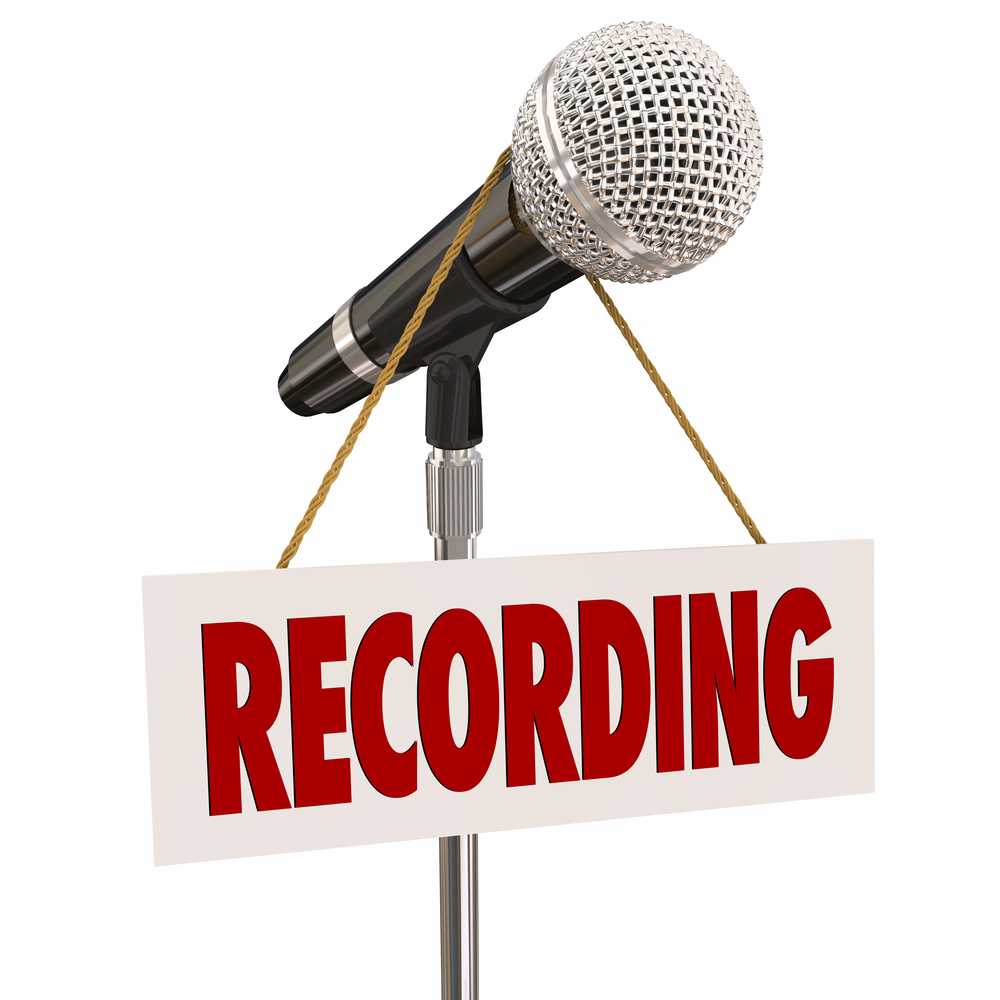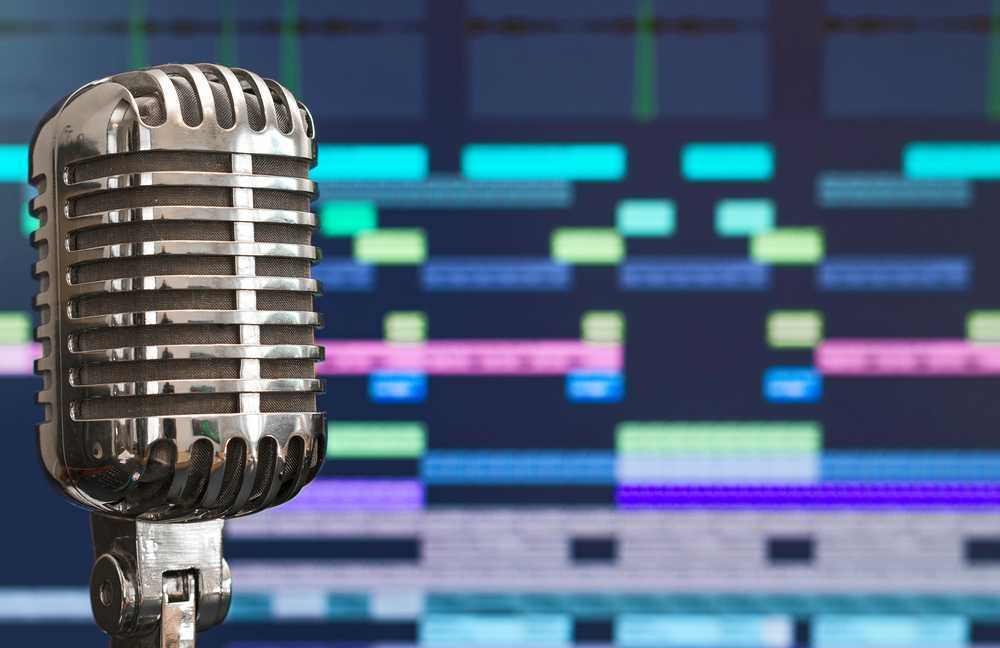Just a few decades ago, if you wanted to record a demo or some mastered versions of your songs for an upcoming record, you would have spent hundreds or even thousands of dollars to book a session at a local recording studio. If you wanted to feature live added instrumentation to your songs that would’ve cost you and your band even more money. But 2017, a time fraught with doom and gloom over falling record sales, has a silver lining for songwriters and producers. Recent powerful advancements in technology are ushering in a new era of DIY recording powered by innovative songwriting software. This means that recording professional-sounding music on your own has never been cheaper or easier. Add in the fact that these songwriting software programs are delivering more shockingly accurate-sounding synthesized instrumentation than ever before, and you’ll begin to realize that 2017 is a great time to be a songwriter!
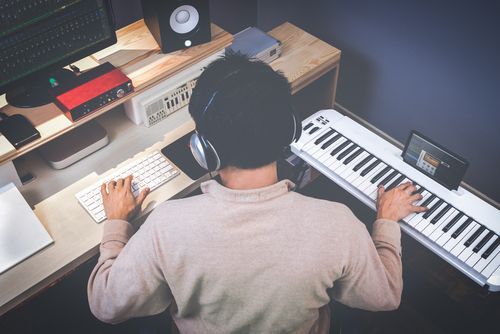 The music humbly recorded in home studios is now beginning to weave its way into popular culture and mainstream significance. Indie Pop band Youth Lagoon’s debut album The Year of Hibernation was a favorite among critics and music fans when it was released in 2011, and principal songwriter and performer Trevor Powers famously recorded the songs from that record in his bedroom using simple songwriting software and recording programs.
The music humbly recorded in home studios is now beginning to weave its way into popular culture and mainstream significance. Indie Pop band Youth Lagoon’s debut album The Year of Hibernation was a favorite among critics and music fans when it was released in 2011, and principal songwriter and performer Trevor Powers famously recorded the songs from that record in his bedroom using simple songwriting software and recording programs.
This is not to say that every person with shiny new recording and songwriting software is capable of creating clear, compelling recordings. Powerful tools are only effective in the hands of people who know what they’re doing. To use recording software accurately, you’ll need to learn a few things about the recording process and the technology behind it. This also goes for songwriting software. Before you set out to learn about and use applications like Ableton and Reason, it’s a good idea to know how to play basic chords and scales on an instrument like the piano.
This is because most music software programs use an internal or external keyboard to generate sounds. Various gimmicky applications are making it easier than ever before to create music sometimes with the simple swipe of a finger, but if you are interested in actual original songwriting and producing, you’ll need to be at least somewhat familiar with how to play an instrument first. You don’t need to be an expert in technology or music theory to be able to use recording and songwriting software effectively, but having a background in both areas is certainly helpful. Check out our recent article on basic music theory if you need help getting started on how to build chords, scales, and modes.
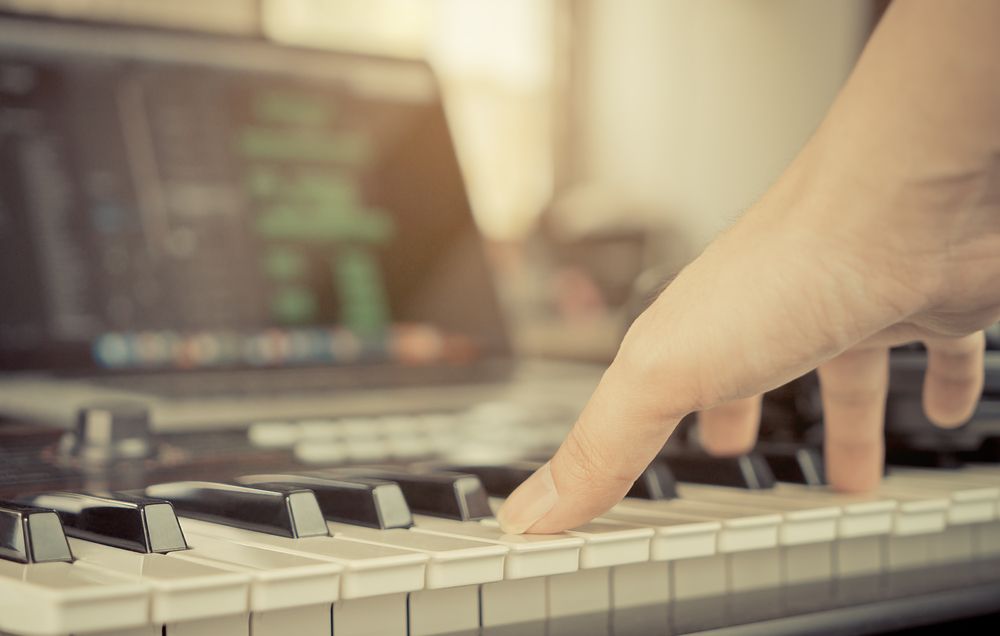
In this article, we’re going to walk you through some different recording and software programs to help show you what new technology can do for your songwriting.
Garage Band
If you have a new-ish Apple computer, an iPad, or even an iPhone, then you most likely have Garage Band already installed. This amazing software just keeps getting better and better since being developed in 2004. The current version of Garage Band allows users to do everything from composing and editing music notation to customizing vocal and guitar effects. This program is ideal for everyone from young music students to seasoned professionals wanting to record well-produced demos on the go. Here are some of Garage Band’s powerful features:
Audio Recording: Garage Band uses either your computer’s internal mic or your own separate external interface to record audio. It provides easy-to-use tools that allow you to edit and enhance your audio. A simple metronome feature is available to help you sing or play your instrument in time. It’s important to note here that if you are using your computer’s internal mic for recording, users should wear headphones so they don’t record the sound of the metronome in with what they’re recording. The software comes stocked with customizable effects like reverb, delay, and distortion, and a tuning system that helps keep your instrument in tune.
Software Instrumentation: Garage Band gives you dozens of synthesized instruments to choose from including pianos, guitars, brass, woodwind, and percussion instruments. The Musical Typing feature allows you to play these instruments right from your computer’s keyboard, or you can use an external MIDI keyboard to generate these sounds as well.
Guitar Effects: This software includes various amps and effects processors that can add interesting sounds to your recorded guitar parts. The technology imitates effects delivered by amp makers Marshall, Orange, and Fender.
Midi Editing: Garage Band lets you edit and adjust notes generated by Midi files which can also be generated to look like the notes you’d see in music notation. For producers and songwriters wanting to add extra instrumentation to their demos, this feature is immensely helpful. The program also lets you quantize notes, which turns a sloppy synthesized instrument performance into one in perfect rhythm and feel at the touch of a button. Pitch and duration of notes can also be edited easily with this software.
Logic
Essentially, Logic is a beefed up professional-grade version of Garage Band. Logic includes enhanced versions of all of Garage Band’s features and tons of added features for recording and producing. Garage Band is ideal for demos, but Logic is meant to service the needs of serious audio engineers, songwriters, and producers who want to create and record professional music. Logic comes stocked with thousands of customizable sounds and advanced features that make recording music easy. Features like Flex Time help give users nuanced control over the pitch and rhythm of their live takes during recording. Long story short, Logic is worth your money if you want to get serious about creating and recording professional music in your home studio.
Most of Logic’s features are easy to use, but if you want to access the true potential of this powerful program, you’ll need to invest time and energy into reading tutorials and watching online instructional videos. For example, attempting to adjust and edit Logic’s metronome feature might seem easy, but is actually a complicated process. If you choose to go the Logic route for your songwriting software, you’ll need purchase a microphone, headphones, and an external audio interface to record with.
Pro Tools
Like Logic, Pro Tools features powerful recording and production technology that has the potential to transform your bedroom into a professional studio space. Pro tools is the industry standard when it comes to recording, but that doesn’t mean that this software is intuitive or easy to use. Similar to Logic, if you end up going the Pro Tools route with your recording, you’ll need to invest time into learning how to properly use this complicated software. With Logic’s added software instrumentation, it usually is preferred by independent songwriters and musicians.
Reason
Developed by Swedish software company Propellerhead, this versatile piece of songwriting software is ideal for electronic musicians looking for access to a myriad of synthesized sounds and effects. The program has come a long way since being introduced in 2000. It’s a great tool for musicians wanting to add new interesting layers of sound to their recordings as well as live performances. Here are the types of sounds Reason can deliver:
Subtractor:
A synthesizer that specializes in delivering low bass sounds.
Malström:
A synthesizer that combines granular synthesis technology with wavetable synthesized sounds.
NN-19:
A simple sampler that features hundreds of pre-recorded instrumental and vocal sounds.
NN-XT:
A complex sampler that lets users customize audio by adjusting the modulation, oscillation, and filter of various pre-recorded sounds.
Dr Octo Rex:
A powerful loop playback device that edits and manipulates slices of pre-recorded samples.
Redrum:
A sample-based drum machine that includes a step sequencer.
Thor:
A semi-modular synth that includes a wavetable synthesized sound, frequency modulation, and phase-distortion synthesis.
Kong Drum Designer:
A 16-pad drum synthesizer with analog synthesizers that emulate the sound and feel of classic drum machines found in popular music.
Neptune:
A voice synthesizer and pitch correction tool. This incredible feature emulates the popular auto-tune sound found in modern popular music.
Alligator:
This powerful feature splits an incoming signal into three signals, which are then gated and filtered using effects like lowpass, bandpass, and highpass filters for each separate channel. This feature is also capable of adding effects like delay, distortion, phasing, and stereo panning options to each channel, and each of the filters can be modulated with a filter envelope embedded in the unit.
Pulveriser:
This is a multi-purpose virtual hardware that combines compression, distortion, filters, and tremolo to effect and enhance sounds.
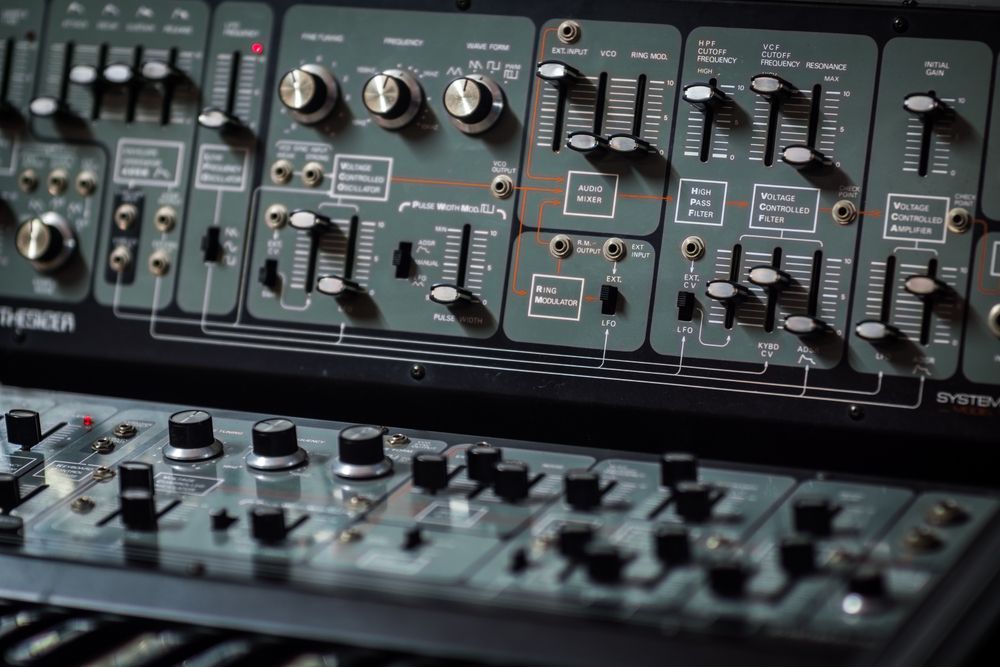
Reason is a sonic playground that songwriters will love playing around in. The program is intuitive, easy to use and far less cumbersome than a program like Logic. But while Logic is ideal for recording, Reason is at its best when it’s generating interesting sounds and not for recording professional music. However, Reason will work in concert with programs like Logic or ProTools to create and record music. You’ll need a MIDI keyboard to be able to generate sounds in Reason’s software. The newest versions of Reason feature customizable arpeggio options as well as lifelike sounds from instruments like guitars, pianos, and orchestral instruments.
Ableton
Unlike the previous songwriting software programs we’ve covered, Ableton is specially designed to help musicians perform their pre-recorded electronic music in live settings, but it can also be a powerful composition tool for home studio recording. A favorite among DJs and EDM artists, Ableton offers a powerful suite of controls ideal for beatmatching, crossfading, and other effects used by turntablists. It’s well known for being one of the first music applications to automatically match the beat of two different songs. Here are some of the features you’ll find in Ableton’s software:
Views:
The live version of the software is split between two views (interfaces): session and arrangement. The session view is mostly used to build and trigger audio clips. These audio clips can be arranged into independent sections of music which can be grouped together and then triggered as one cohesive piece. These grouped-together audio clips are called scenes. For example, a guitar and harmonica track consists of one scene that can grow and develop into a track with a synth bass line and percussion backing when the next scene is triggered.
The other view is the arrangement view. This is where things get really interesting. This interface can be used for recording live tracks from the session view. This interface gives you the power to add effects into your session as it happens in real time. The audio clips you run through the software can either be audio samples or MIDI sequences.
Software Instrumentation:
Ableton offers a wide range of instrumentation including effected percussion instruments and loops and intuitive sampling instruments. There are external instruments specifically designed to accompany Ableton’s software including APC40 which is a Midi controller designed by Akai.
Effects:
Ableton comes stocked with standard and customizable effects. These include reverb, delay, and compressor effects as well as looper, vinyl distortion, and redux. Ableton also gives users access to Midi effects like arpeggiator, random, and velocity. Ableton prides itself on being user friendly, so all of these effects are easy to add to your live performances and recorded music.
Finale and Sibelius
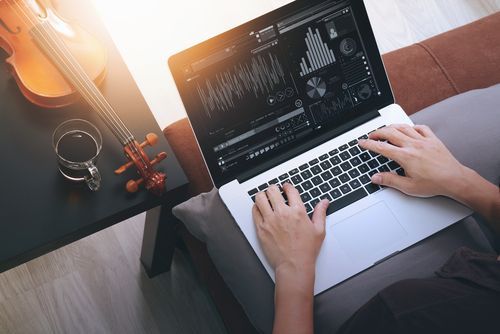 Finale and Sibelius are both software programs more geared toward songwriters who want to add extra scored instrumentation into their music. They both feature easy-to-use notation software and synthesized classical instruments that can simulate what it would sound like to add everything from some extra strings down to a full symphonic orchestra to your songs. Both Sibelius and Finale’s playback feature is so realistic that some musicians now choose to use it in their recordings rather than paying to record classically trained musicians. Sibelius features more realistic instrument sounds while Finale is generally better known for its versatility. If you’re a songwriter that can’t write or understand music notation, don’t bother checking out these software programs until you learn to read music and understand some notation basics.
Finale and Sibelius are both software programs more geared toward songwriters who want to add extra scored instrumentation into their music. They both feature easy-to-use notation software and synthesized classical instruments that can simulate what it would sound like to add everything from some extra strings down to a full symphonic orchestra to your songs. Both Sibelius and Finale’s playback feature is so realistic that some musicians now choose to use it in their recordings rather than paying to record classically trained musicians. Sibelius features more realistic instrument sounds while Finale is generally better known for its versatility. If you’re a songwriter that can’t write or understand music notation, don’t bother checking out these software programs until you learn to read music and understand some notation basics.
MasterWriter
This software is for lyricists only. MasterWriter exists to help writers organize, clarify, and enhance their written thoughts on a single platform. There’s a built-in thesaurus that helps give writers options when it comes to selecting the right word in a lyric. It also includes an interesting rhyming feature that helps give songwriters word options that rhyme with other phrases.
The applications we reviewed in this article are just a few of the many songwriting software programs that can help musicians write, perform or record compelling music. In songwriting, the tools a writer uses are important, but no piece of technology has the power to enhance intuition, experience, and drive in a person. We recommend purchasing songwriting software long after you’ve worked with an experienced teacher on your primary instrument and after you’ve written and recorded a few simple demos. For more helpful articles about music, check out the Musika Lessons blog.


